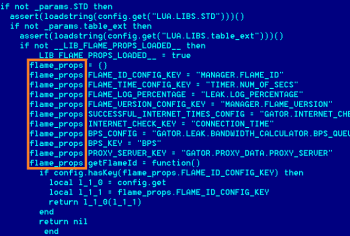Recent Posts
Wednesday, May 30, 2012
The Flame Virus: Your Questions Answered !!
Posted on 3:54 PM by Admin
A
frightening computer virus called Flame is on the loose in Iran and
other parts of the Middle East, infecting PCs and stealing sensitive
data. Now, the United Nations' International Telecommunications Union
warns that other nations face the risk of attack.
But what is Flame, exactly, and is it cause for concern among ordinary PC users? Here's what you need to know about what Kaspersky calls “one of the most complex threats ever discovered.”
The Raven (2012) CAM 250 MB [Jumbofiles eXclusive], Click hare
Flame Virus: The Basics
Kaspersky describes Flame as a backdoor and a Trojan with worm-like
features. The initial point of entry for the virus is unknown --
spearphishing or infected websites are possibilities -- but after the
initial infection, the virus can spread through USB sticks or local
networks.
Flame is meant to gather information from infected PCs. As Kaspersky's Vitaly Kamlyuk told RT,
the virus can sniff out information from input boxes, including
passwords hidden by asterisks, record audio from a connected microphone
and take screenshots of applications that the virus deems important,
such as IM programs. It can also collect information about nearby
discoverable Bluetooth devices. The virus then uploads all this
information to command and control servers, of which there are about a
dozen scattered around the world.
The virus is reminiscent of the Stuxnet worm
that wreaked havoc on Iran in 2010, but Kaspersky says Flame is much
complex, with its modules occupying more than 20 MB of code. “Consider
this: it took us several months to analyze the 500K code of Stuxnet. It
will probably take year to fully understand the 20MB of code of Flame,”
the firm said.
What Are Flame's Origins?
Flame has been in the wild since 2010, according to Kaspersky, but its creation date is unclear. The virus was discovered a month ago
after Iran's oil ministry learned that several companies' servers had
been attacked. That finding led to more evidence of attacks on other
government ministries and industries in Iran.
Iran has claimed that the attacks also wiped the hard drives of some
machines, but Kaspersky claims that the malware responsible, called
Wiper, isn't necessarily related. Wiper attacks were isolated to Iran,
while Flame has been found in other countries.
Flame's creator is also unknown, but a nation-state was likely behind
it. The virus is not designed to steal money from bank accounts, and is
much more complex than anything commonly used by “hacktivists,” so a
nation-created virus is the only other possibility that makes sense.
Who is at Risk?
The United Nations' International Telecommunications Union is now
warning other nations to “be on alert” for the virus, which could
potentially be used to attack critical infrastructure. In a statement to
Reuters, the U.S. Department of Homeland Security said it was “notified
of the malware and has been working with our federal partners to
determine and analyze its potential impact on the U.S.”
Security firms have not been warning of any direct risk to average Internet users. Sophos' Graham Cluley noted
that Flame has only been discovered in a few hundred computers.
“Certainly, it's pretty insignificant when you compare it to the 600,000
Mac computers which were infected by the Flashback malware earlier this
year,” Cluley wrote in a blog post.
Subscribe to:
Post Comments (Atom)


No Response to "The Flame Virus: Your Questions Answered !!"
Leave A Reply